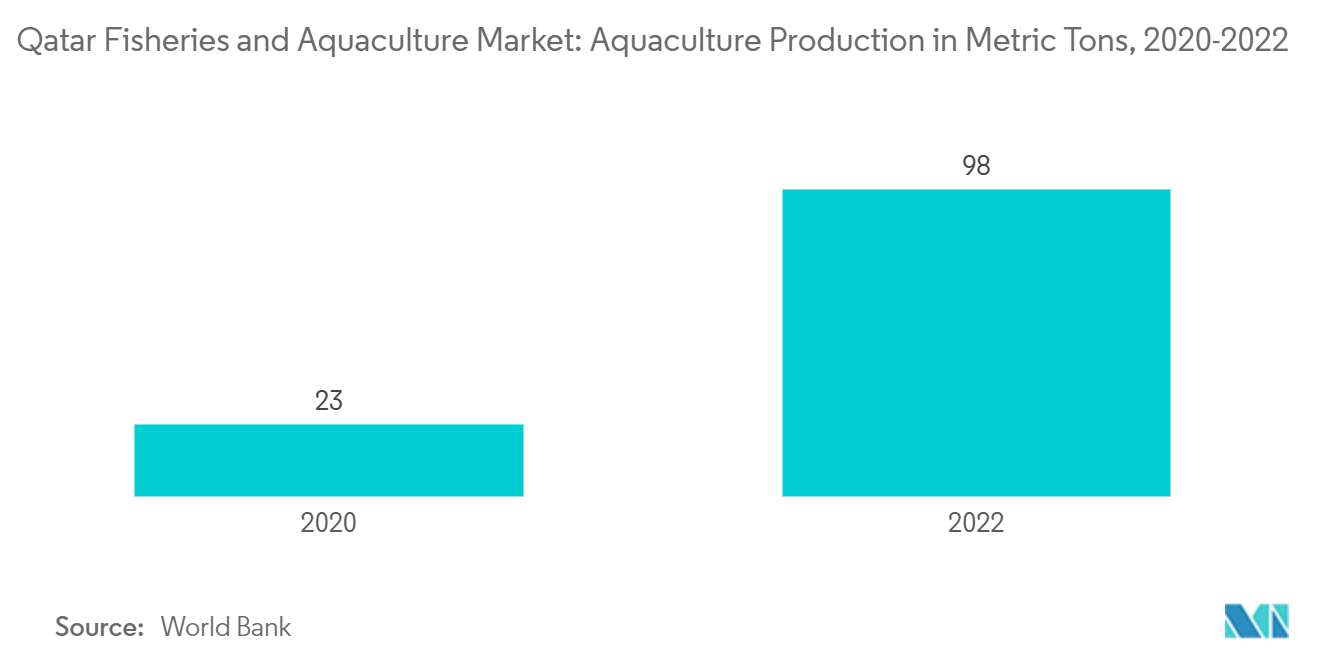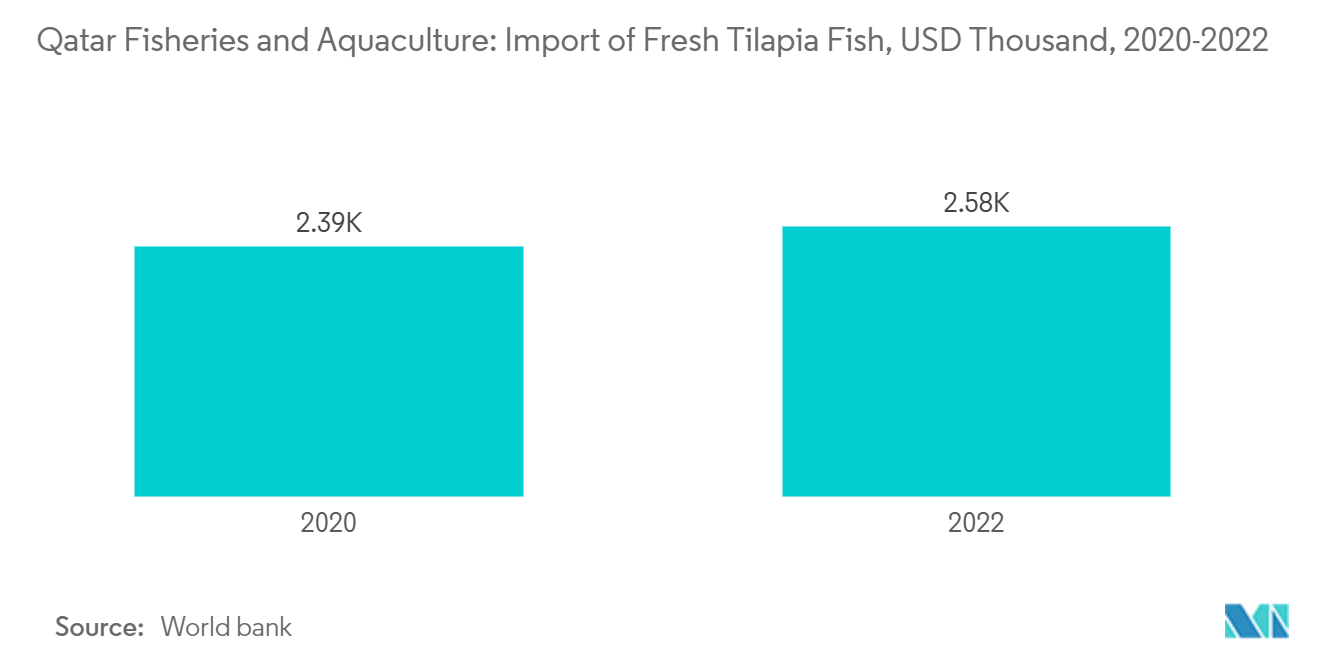Market Trends of Qatar Fisheries And Aquaculture Industry
Increase In Seafood Demand
Qatar’s growing population, thriving economy, and profile as one of the popular tourist destinations have increased the demand for quality food products. According to the World Bank, the population in the country was 2,688,235 in 2021, this rose to 2,716,391 thousand in 2023, placing a critical need on the sustainable and efficient management of marine resources and fish stock. The population growth rate and the consumption rate are likely to be the major factors driving the aquaculture sector production in the country. For instance, according to World Bank statistics, in 2022, aquaculture production reached 98 metric tons from 23 metric tons in 2020.
However, the marginal rise in disposable incomes and prosperity, accompanied by a noticeable shift in the dietary preferences of consumers in the country, as they have expanded their diets to include more meat, fish, and seafood, may consequently contribute to the growth of the market. With the growing awareness, consumers mostly prefer products that are produced sustainably without over-exploiting the species and produced organically. Additionally, the growing concerns about obesity and diabetes in the country and the presence of various expatriates have also resulted in rising demand for healthy foods, and opportunities for healthy and light value-added seafood products are anticipated to increase.

Freshwater Fish is a Significant Segment by Type
Tilapia is the major freshwater fish sold in local fish markets and retail stores. According to the Ministry of Municipality and Environment (MME), the production of freshwater fish in Qatar is around 1,000 metric tons per annum. However, the local demand, especially coming from expatriates in Asian countries, is comparatively high as they are fond of freshwater fish. Further, the country plans to produce other types of fish as well in the near future in line with demand from the local market.
Besides, Qatar imports a significant amount of freshwater fish to meet local demand, as the country has limited natural freshwater resources. Qatar’s fish imports are largely driven by the need to diversify its food sources and maintain food security. Qatar imports freshwater fish from several countries, mainly neighboring regions and international exporters like India, Bangladesh, Vietnam, and Thailand. These countries are known for their aquaculture industries, supplying fish like tilapia, carp, and catfish. For instance, according to the ITC Trade Map, Qatar's import of tilapia was USD 2,393 thousand in 2020, which increased by USD 2,584 thousand in 2022. Besides, the Qatari government, through entities like the Ministry of Municipality and Environment (MME), has been encouraging the development of freshwater aquaculture to reduce the reliance on fish imports and improve food security. Investment in inland aquaculture farms and closed-system aquaculture could boost the production of freshwater fish.


